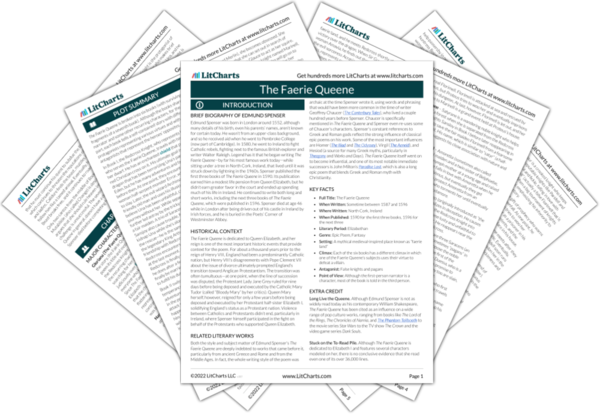The rivers mentioned in this passage are three of the four rivers that flowed through the Biblical Eden, suggesting that Una’s homeland is literally a paradise. Dragons, which show up in mythology around the world, often acted as a stand-in for evil or particularly for paganism in British mythology, notably in the legend of the British St. George the dragon slayer. Gloriana’s interest in slaying a distant dragon suggests that she is a benevolent ruler, once again portraying Queen Elizabeth in a positive light.
